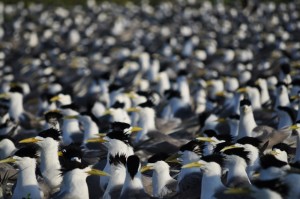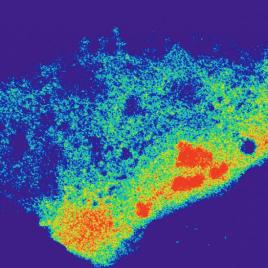The view seen by humans (left) and drones (right) when trying to count seabird populations from either the ground or the air. (Image credits: Jarrod Hodgson)
A new study compares the accuracy of monitoring of sea bird colonies by UAVs and traditional human ground counts and demonstrates that population estimates can be improved with this technology.
Unmanned aerial vehicles (UAVs) or drones are being increasingly used for environmental monitoring. They are cost-effective and can survey difficult to access areas.
Researchers used drones to count the size of the colonies for three types of seabirds: frigates, terns, and penguins while researchers counted the same colonies on the ground.
The authors also developed a new analytical model that could enable researchers to transition their historical data to the more precise data for more effective wildlife monitoring.
Original research paper published in Scientific Reports on March 17, 2015.
Names and affiliations of selected authors



